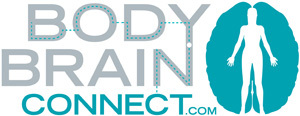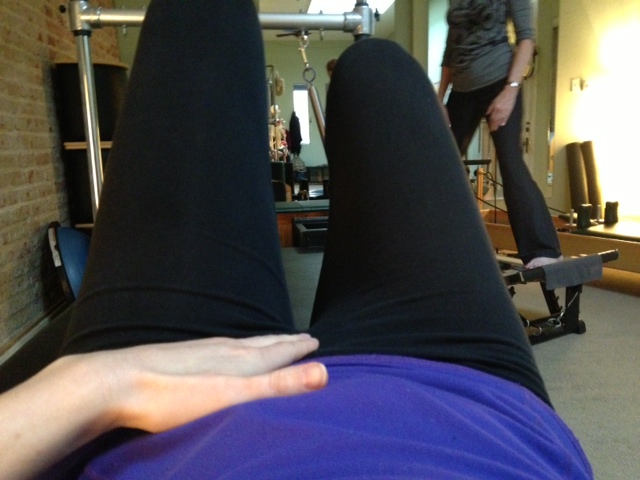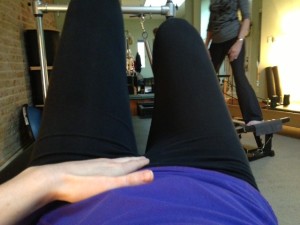In February and early March 2013, my studio, Pilates with Anne was a hive of activity in the evenings as the arena of a new research study. The lead researcher was Jeanne Masterson, an undergraduate student at Dominican University of California; her adviser is a neuroscientist, Dr. Afshin Gharib. The goal of Jeanne’s research was to measure whether a specific combination of emotional feedback plus vision and touch improved movement learning. In 2011, while I was earning my M.Ed. in Mind, Brain and Education at Harvard University, I studied how neuroscience research could lead to brain-based/inspired cues for Pilates and movement teachers. Jeanne pushed this knowledge forward by measuring whether or not these brain-based techniques are effective. The study was completed on March 8, 2013. As we wait for the data to be analyzed, I want to share with you my perspectives on the research process as a Pilates teacher and studio owner –why research is important, the highs and lows of the research process, and what the teaching experience was like.
Why is research relevant?
It’s essential to note why research is relevant. As the Pilates industry matures, it’s important to set us apart from other fitness and mind-body fitness programs. Everywhere good Pilates teachers abound, we hear anecdotal stories of reduced back pain and improved function. But without research it is hard to make a convincing argument for the efficacy of Pilates. The yoga community has developed high quality research organizations such as International Association of Yoga Therapists to promote yoga to the medical industry. Currently the Pilates Method Alliance is helping to spearhead research with Sherri Betz, PT PMA-CPT. Last year, I presented research at the PMA 2012 Conference in Las Vegas, and Jeanne and I hope to present results of our study this year. As Pilates professionals we need to communicate effectively with the health care industry, making it clear that Pilates is an effective approach to physical therapy. It is growing increasingly important that we speak their language through research.

Anne Bishop, Sherri Betz & Risa Sheppard @ PMA Conference 2012
Pilates teachers already experiment
As Pilates or Yoga teachers, we experiment all the time. Think about teaching the concept of neutral pelvis or spine to a new client. With beginners, this can be difficult idea. Imagine working on the reformer, doing footwork, and teaching the student not to tuck (posterior tilt) the pelvis. You may have a laundry list of cues you give the student. Some examples:
- “Feel as if your hip bones and pubic bone are on the same plane and parallel to the floor.”
- “Keep your tail bone heavy and maintain a natural arch in your back.”
If this doesn’t work, you might try this cue:
- “Imagine you have a brimming cup of 200-degree coffee balanced between your belly button and your pubic bone and you don’t want to spill it.”
With each of these cues you are essentially experimenting with your client. You give the cue, observe the change, and give another cue if the prior one did not work. Pilates research takes this idea of experimentation to the next level. Instead of reading your client, which is subjective, you are relying on a non-biased third person to measure which cue works best for most clients.
What is conducting brain-inspired Pilates research like?
The first step is coming up with a clear question. In this case it was, Will positive feedback and a blend of brain-inspired touch and visual cues improve movement learning? Another preliminary step was to find a research organization, like a university, to collaborate in the research. This isn’t totally necessary, but it does make framing a research project easier, because universities often have the resources and knowledge to facilitate the research process. I was fortunate to be approached by the ideal researcher, Jeanne Masterson, a Pilates teacher and physical therapy aide with specialties in sports and spine therapy who was completing her undergraduate degree and whose research interests dovetailed with mine. Finally, an Institutional Review Board must review your study to make sure you are not exploiting your subjects. IRB compliance is necessary when you work with human subjects and can be submitted through a university or directly to the Office of Human Research Protection. Once these steps were completed, Jeanne and I began recruiting and organizing subjects.
The highs and lows of recruiting subjects
To recruit subjects, Jeanne and I reached out to our professional lists and communities. We sent out emails and created flyers (Brain-based_Pilates_Research_currently_recruiting_participants). Jeanne was able to get quite a few interested participants, which was an absolute high! It meant the general public was interested and cared about Pilates research and that we could get participants for the study.
Getting 10 participants to commit to 2 nights per week for 2 weeks was another story. Happily, we had back-up participants for each study, because at least 20% of our participants cancelled within less than 24 hours of our start date, February 26th, 2013. A few didn’t let us know until 45 minutes before we were starting. This was our low point. Had we done something wrong? How could we get useful statistics without enough subjects in the study? Luckily, with some last minute scrambling—Facebook posts, phone calls and last minute emails and newsletter blasts, plus stopping someone in the hallway– we were able to round up the final 12 participants for the study.
In the future, I realized, we could avoid the last minute problems with subjects not showing up. We could organize even more back-up subjects, creating a longer waiting list. If too many participants showed up, I could offer those who didn’t have the chance to participate a complimentary class at the studio as a thank you.
The good news: No one dropped out of the study (it’s not uncommon to have dropouts along the way in research projects). And we found that the many of the participants not only developed positive relationships with each other, they actually enjoyed the study.
Teaching during the study
As a long-time instructor and studio owner, I am always focused on results and client satisfaction. Teaching during this study required me to put on a very different hat.
In this study I was teaching a mixed-level group of Pilates to two groups of subjects with 4 participants in each group.
In the first group, the control group, the research goals required me to teach more robotically, give less positive feedback, and minimize the visual and touch cues I frequently give to clients. In this group I still used other beneficial cues like imagery—I even used a skeleton to illustrate some exercises—but I kept the emotional feedback neutral and avoided a specific combination of visual and touch cues.
In the other group, I gave more positive feedback. I also used the specific brain-based technique of vision and touch—which requires students to place hands on their own bodies and watch their movements– being analyzed by the research study. At times I felt a bit like I was acting, but I didn’t want to skew the results. If I didn’t treat each group as I was supposed to, the research study wouldn’t be valid.
The photographs to the left show an example of some of the enhanced brain-inspired cue techniques that subjects received in the experimental group.
How you can learn the results of the study?
The data is still being analyzed. Keep an eye out for results of the study, “The role of emotion, vision and touch in movement learning.” Jeanne Masterson gives her report on the study at the Society for the Neural Control of Movement Conference in Puerto Rico April 16-20th. I’ll be reporting results on this blog. And you also can learn the techniques and more about the study at the Body Brain Connect Workshop June 21-23 in New Orleans, LA at Crescent City Pilates.
Other Pilates & Yoga Research Articles
- The Importance of Industry Research, Sherri Betz PT, GCS, CEEAA, PMA®-CPT
Chair, PMA Research Committee Vice-President, Polestar Pilates Education - Resources for DIY Research: Kelly Mcgonigal, PhD. Stanford University and author.
- Infographic about Registering an IRB
*Jeanne Masterson: Pilates Teacher, Physical Therapy Aide and Sports and Spine Therapy of Marin.








I was thrilled to learn about your study originally, Anne, and it’s fantastic to get the inside scoop now that it’s complete. Thank you for sharing with such succinctness what the process is like and reinforcing the absolute importance of research within our method.
Thank you Chantill,
It has been so great to work with you over the past year!
A
Very interesting research. We all say pilates is a mind/body exercise method, but there’s much more to it then the mind willfully controlling the body and improving concentration. I am currently doing some of my own research in regards to the brain connection with pilates. I am working with a chiropractic neurologist to gain his perspectives on how pilates effects the brain. I’d love to stay connected and informed on your results.
Thank you and all the best,
Donna
Hello Donna,
I would love to hear what the chiropractor you are working with has to say. It is really important to cross pollinate with other disciplines and not just work within separate silos.
This sounds amazing.
Anne
What you’re doing is important. We must be integrating into physical therapy and recovery. Our movements are based on the everyday movements of our clients, Yoga is not. The more we establish and distinguish ourselves in the medical arena the more people will be helped. So very many surgeries are preventable just through the proper application of the work we do. Thank you for your efforts.
And I have a few things to say about people who commit to something, then no show or last minute cancel. I don’t think you need them in your studio, and I hope you don’t put up with that with clients. Although I expect we have all learned that the hard way.
Dear Candy,
Thank you for your kind words. It was a lot of work but amazingly exhilarating and Jeanne Masterson deserves so many thanks as well.
Thank you,
Anne
Hi there
I am a Physiotherapist and Pilates instructor (Polestar Rehab and Mat certified) and was at the Las Vegas conference in November. It was great to hear about the research going on. Please keep me in the loop with your follow-up research findings, as I think we need this kind of research to validate our practice and update our understanding of the best ways to facilitate ideal movement? Thank you for all your hard work.
Kind regards and good luck
Annemarie McKenzie
Reform Physiotherapy & Pilates
Mount Lawley
Perth, Western Australia
Hello Annemarie,
Yes I remember meeting you at the conference. I hope we can connect again soon!
Anne
Hi Anne,
I am a fellow alum of the MBE program, and I just wanted to express how cool I think it is that you are using your knowledge and skills in an area you are passionate about. The best for your research and for your presentation in Puerto Rico next month!
Sincerely,
Laurel Blough, Ed.M. ’08
Hello Laurel,
I am so glad to connect with another MBE alum on this site! I think it so important that Mind, Brain and Education influence the world in all sorts of different learning environments. Plus, it is really exciting to reciprocally connect the research and practice!
All the best to you,
Anne B